Вы здесь
Mausoleum Akhmed Yasawi.
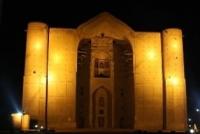
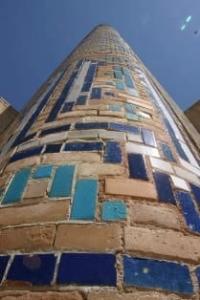
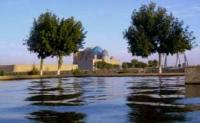
Architectural monuments in vicinities of Turkestan.
«Memory is the treasure house of the mind wherein the monuments thereof are kept and preserved»
Thomas Fuller.
What to look in Turkestan at.
Mausoleum of Ahmed Yassawi is located at an altitude of 213 meters above sea level, located on territory of historical and cultural reserve - Azret Sultan Museum, in central part of town of Turkestan, Turkestan region.
Khanaka of Ahmed Yasawi, erected at the end of the XIVth century. In the south-eastern part of the town, on the territory of the medieval settlement of Turkestan. A striking example of monumental architecture of the Timurid period. Its large size and rich decoration make the building the dominant architectural accent of the town.
The khanaka was built on the orders of Emir Timur in 1399 at the burial site of Khoja Ahmed Yasawi (12th century), the leader of the Sufi order, the author of the religious collection “Hikmet”. The will of the customer was confirmed by a decree on the reconstruction of the Sufi monastery that already existed here.
The decree provided for the general plan, basic dimensions and, in part, some decorative details of the building and its interior decoration, waqf sources of income were donated and servants were hereditarily assigned to the khanqah. Construction was entrusted to Mawlana Ubaydullah Sadr.
In the inscriptions of the building's cladding and on the items of its decoration, the names of some of the masters who took part in the construction were preserved - mosaicists: Khoja Hasan Shirazi and Shame Abd al-Wahhab Shirazi, bronze craftsmen - Izz ad-din ibn Taj ad-din Isfahani , Abdal-Aziz ibn Sharaf ad-din ibn Tabrizi.
Apparently, other craftsmen brought by Timur from the countries he conquered also took part in the construction work. The bulk of the ordinary builders were probably prisoners from the army of the Golden Horde Khan Tokhtamysh, who had been defeated in the battle with Timur the day before.
The construction of the cathedral mosque (1339) in Samarkand, where the best construction forces of the entire state were concentrated, including craftsmen from Turkestan, did not allow the completion of the construction of the khanaka. One of its minor construction stages occurred during the reign of the Bukhara Khan Abdallah 2, during which a niche was built into the arch of the main portal.
All subsequent work, up to the general restoration of the monument, carried out under Soviet power, was of a local, repair nature. Khanqah Ahmed Yasawi is a multifunctional building. The main composition of the premises is represented by a jamaathana - a meeting hall, a tomb - the burial place of Ahmed Yasawi, a mosque, large and small aksarai - rooms for meetings and disputes; kitabkhana - a room for copying papers, storing books and documents, where ritual food was prepared, kudukkhana - a room with a well, hujras - rooms for servants of the khanaka and pilgrims.
Compositionally, all the rooms of the khanaka are grouped into a rectangle measuring about 60 x 50 m and 15 meters high. The domes and arches of the portal rise up to 38 meters. The axial location of the main premises on the facade is revealed by the powerful volumes of the arch of the main portal, the domes of the jamaathana and the tomb.
The northwestern orientation of the monument in the scientific literature is conventionally designated north. The architecture of the facades is laconic and almost devoid of plastic elements. Large smooth planes of walls, occasionally cut through by window and door openings.
Thanks to the polychrome glazed facings and turquoise tones, the entire structure is dominated by epigraphic ornamentation. All the walls of the monument are filled with texts of religious content, often arranged in geometric girihi grids. The variety of inscriptions and their decorative variety reveal the functional differentiation of epigraphic decoration in the architecture of the building.
Texts from the Koran occupy places on the dome friezes, framed by the mihrab and are written in canonized handwriting suls, the hadiths used in the design of window and door openings are especially highlighted on the monument. Carpet filling the walls with stylized letters contain frequently repeated theological maxims.
Elements of floral ornament in their “pure” form are used extremely rarely, only when decorating tympanums of windows, doors, arches, panels, and plinths. The ribbed dome of the tomb is especially decorated, entirely decorated with glazed polychrome madohilis.
The only facade of the khanaka that remains uncoated is the southern or main facade of the building, designed in the form of a giant portal. The arch of the portal rises to a height of 38 meters, but this is only part of its expected height. Similar portals of Shakhrisab, Samarkand, Herat buildings suggest that the portal of the khanaka could reach a height of 55 - 60 meters.
The main room in the architectural composition of the building is the tomb of Ahmed Yasawi, located on the main axis in the depths of the building. This 2-light room is covered with a high dome extending into twilight. In the center of the room there is a large tombstone without an epitaph, lined with slabs of light green serpentinite (coil) with veins from the local Karatau deposit.
There is a mosque in the northwestern corner of the building. he room is covered with a dome, placed high on a drum cut through by light openings. The mosque is the only room of the monument where fragments of wall paintings made with blue paints and representing geometric and floral ornaments enclosed in belts, frames, and cartouches have been preserved.
A unique monument of mosaic art is the mihrab of the mosque, made using the technique of stacked glazed mosaic. The connecting link of all the premises is the jamaathana - this is a huge hall covered with a dome. The doors of the Jamaathana tomb are unique examples of artistic carving with bone inlay on wood.
In the center of the hall there is a ritual bronze cauldron (cauldron), in 1939 -1989. was on display at the State Hermitage Museum. The arches and domes of the main rooms are decorated with stalactite systems. The architecture of other rooms of the monument is devoid of decoration.
The Turkestan khanaka is a complex engineering structure. The large mass of the building with two-story halls, 2- and even 3-tier arrangement of premises predetermined very responsible design solutions. The foundations of the monument are multi-layered clay bays up to 1.5 meters deep, which simultaneously serve as waterproofing for the walls.
During the strengthening work in 1952 - 1954. new ones completed foundations - brick on cement. The busiest parts of the monument are the pylons of the portal; the foundations of the jamaathana rest on mud foundations. The walls are made of square baked bricks with ganch mortar (a type of gypsum).
Continuing the traditional scheme of the arched-domed structure, the masters of the Turkestan khanaka in the premises of the large aksarai, the Halimkhans, used a new ceiling element for their time - a girth arch. he Turkestan monument, due to the unfinished construction and, in particular, the incompleteness of the portal, makes it possible to identify the technological features of medieval construction.
Ancient wooden scaffolding and devices for lifting loads have been preserved here. Exposed brickwork allows us to understand the principle of constructing long-span arches. In the premises of the portal part, traces of temporary staircases from the construction period, nests in the walls for attaching circled domes, and plaster templates of arches have been preserved.
The Khanaka of Ahmed Yasawi played a significant role in the formation of the Turkestan necropolis, which developed on the site of an early medieval cemetery, represented by several grave buildings and mausoleums with the traditional orientation of their entrances to the southwest - towards Mecca.
The appearance of the khanaka predetermined the formation of khan burials here. So, at the end of the XVth century. In Turkestan, the mausoleum of Rabia Sultan Begim, the daughter of the famous Timurid Ulugbek, wife of Khan Abulkhair, buried in Sygnak (142 km northwest of the mausoleum of Akhmet Yasawi), is being built.
Later, mausoleums of Yesim Khan, Ablai Khan, Jahangir Khan and others were built near the khanaka of Ahmed Yasawi. The formation of the Turkestan necropolis took place according to the principle of creating a closed space with the orientation of the mausoleums on the main axis running from the khanaka portal to the southeast.
A small part of the burials was made in the khanaka itself, but at a later time. The khanqah of Ahmed Yasawi played an important role in the formation of the initial structure of the city of Turkestan. The monastery of Ahmed Yasawi has been around since the XIIth century. was an important urban planning core, around which religious buildings such as hilvets were created, commercial and residential buildings.
From the XVth century, intensive urban construction was carried out in a western direction and by the XVIth century. Yasy was already becoming a significant fortified city, where the permanent residence of the khans was located and active trade was carried out.
Khanqa Ahmed Yasawi is one of the unique architectural structures on the territory of Kazakhstan. Scientific examination of the khanaka began at the end of the 19th century, although descriptions of the building are found in different sources starting from the XVth century.
The first scientific expedition to the city of Turkestan (in 1905) to make drawings of the monument was the expedition of the Russian Committee for the Study of Central and East Asia, headed by Professor N. I. Veselovsky. Since 1922, several commissions have participated in the technical inspection of the building.
The most in-depth studies of the monument were carried out in 1952 - 1958. (B.N. Zasypkin, T.Sh. Karumidze, L.Yu. Mankovskaya. K.A. Shakhurin), as well as in 1970 -1980. (B. T. Tuyakbaeva, A. N. Proskurin). The monument is widely covered in the literature.
Over time, the monument suffered great natural destruction. The fact of digging under the walls in connection with mass graves in the XVIIIth - XIXth centuries raised serious concerns. The varying volumes of the monument created uneven overloads in individual areas and the entire building became covered with cracks, splitting it into numerous blocks. The cladding was crumbling in many places.
The first renovation of the monument was carried out in 1872 (mainly cleaning the premises). Significant strengthening work was carried out starting in 1884, as well as in 1887, 1910, 1928, but only since 1952 has it been restored on a scientific basis.
Currently, restoration work is being systematically carried out in Turkestan, covering a wide range of historical and cultural monuments of the city. Khanaka Ahmed Yasawi became a kind of restoration school of the republic: the first Kazakh master restorers X. Shakhanov, B. Atakhanov, O. Urazbaev worked here.
A number of government regulations are aimed at improving the organization of research and restoration work in Turkestan. Currently, the Republican Architectural Museum of Khoja Ahmed Yasawi operates in the khanqah.
Geographic coordinates of mausoleum of Ahmed Yasawi: N43°17'51 E68°16'15.
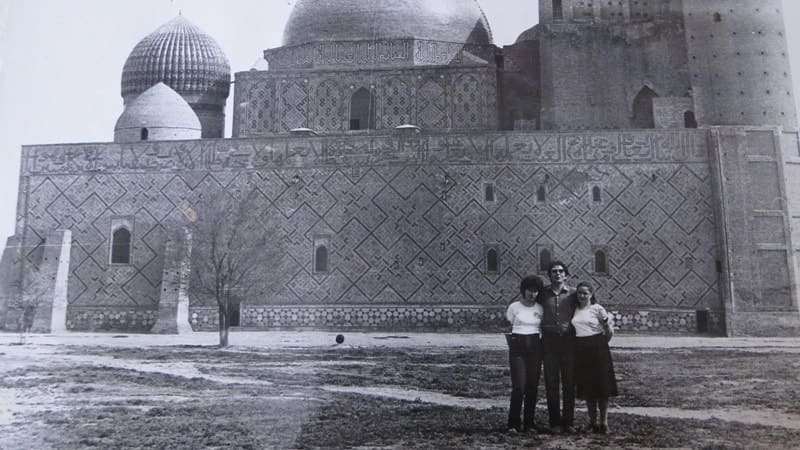
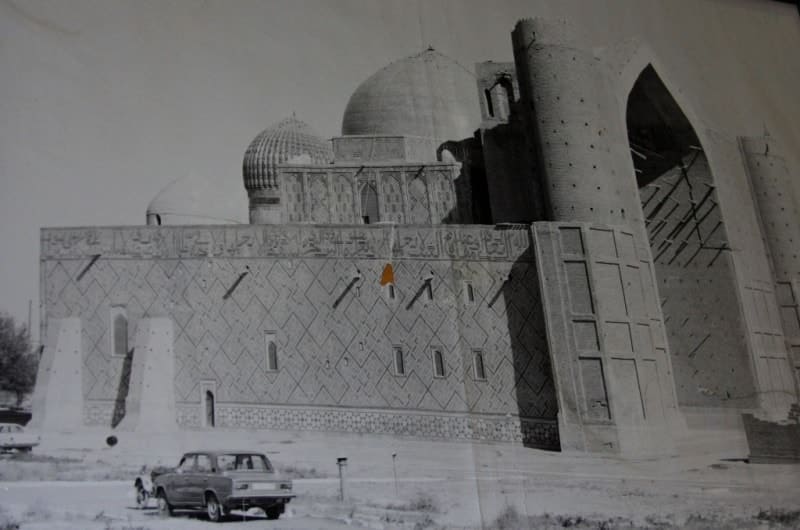
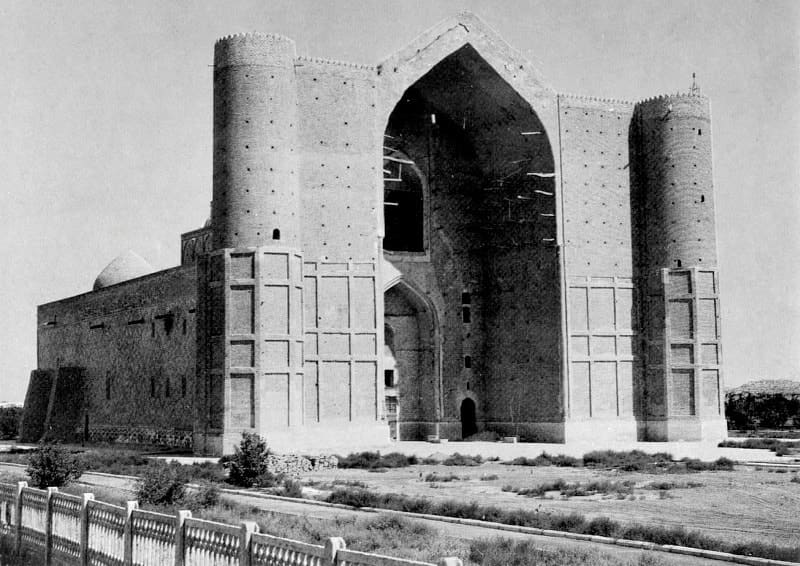
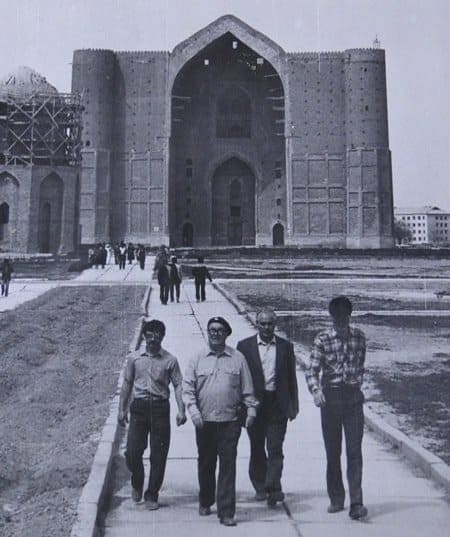
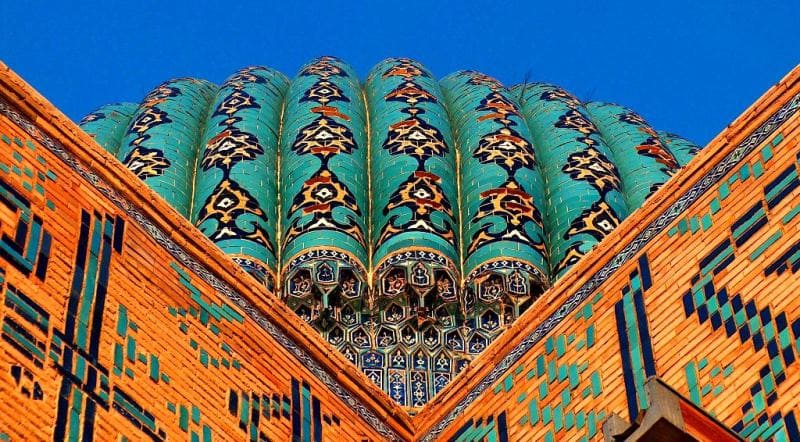
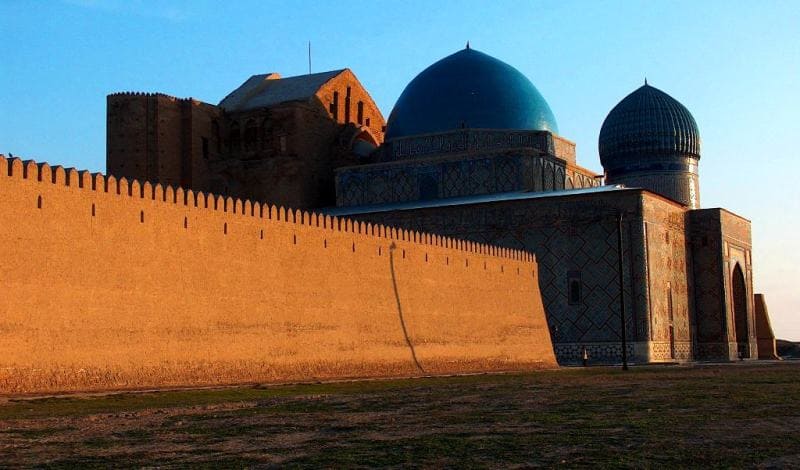
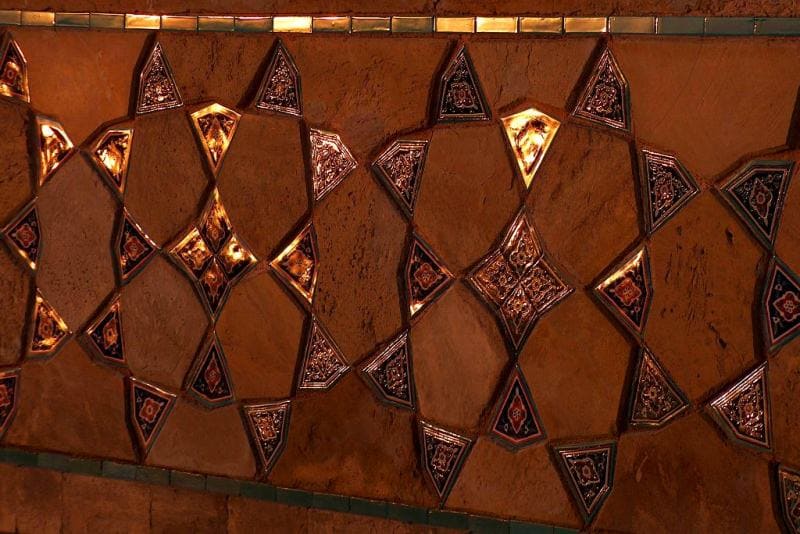
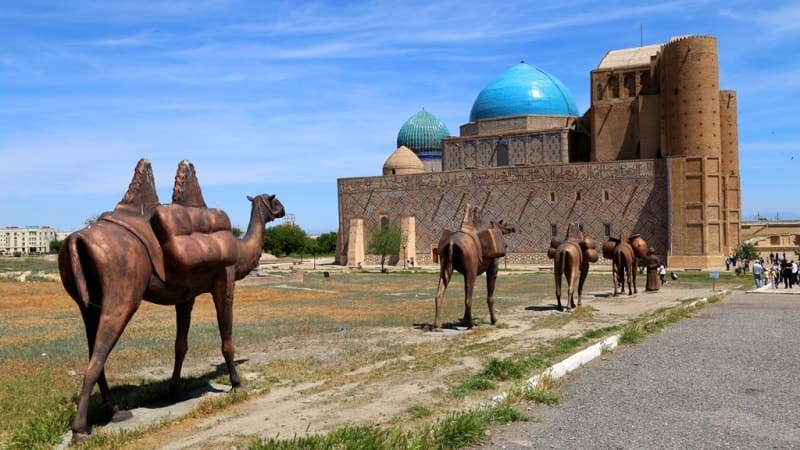
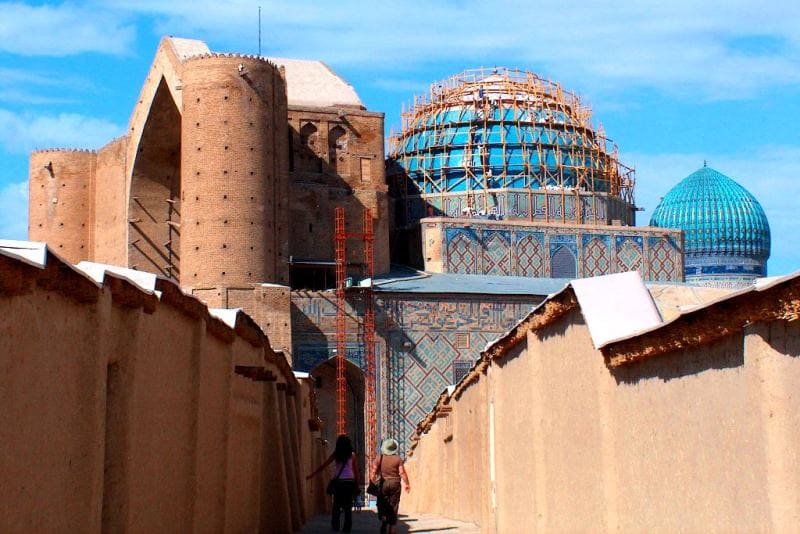

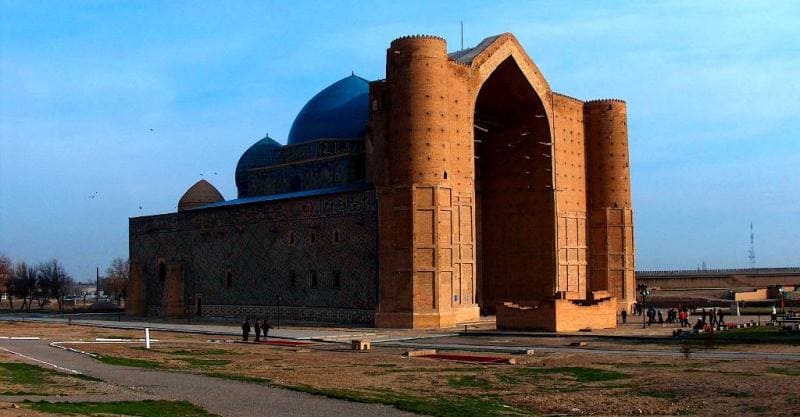


Authority:
Collection of historical and cultural monuments of Kazakhstan. South Kazakhstan region. Volume 1. Alma-Ata. Main editorial office of “Cossack Encyclopedias”, 1994. Author of the article A. N. Proskurin.
Photos by:
Alexander Petrov.







